producing
Flatplan and division of tasks
Ann made the first version of the flatplan but after some puzzling she got a bit stuck so I finished it. I am also responsible to put everything together so I made a list with everything that still needed to put into the drive to complete the magazine.
Google drive
Final documents
We've made a google drive to collect al the content that is made. We use folders to keep it clear. This was also a perfect way to leave each other comments.
We've collected all the files in google docs after we gave each other feedback and did the last adjustments.
1
1
1
2
2
2
3
4
4
4
4
5
1 I made the layout of the columns. I choose for a simple layout and almost no graphic design because the text filled the page already. I wanted the layout not the exact same but somehow in one line to give it a red line trough the magazine.
2 In fashion explained you see my major very literal coming back. I give three examples of fashion brands that have a meaningful message. Where the brand is more than clothing, also a community.
3 In 10 ways to be an ally I give tips what to do in your privileged position and how you can come up for your friends or minorities.
4 I already explained the must sees, daily approachable mediums to have a look at if you want to learn about al kinds of subjects like racism, sexism, the climate crisis, sizeism, ableism, homophobia etc.
5 A word cross with including words and an inspirational quote from Kimberle Williams Crenshaw.
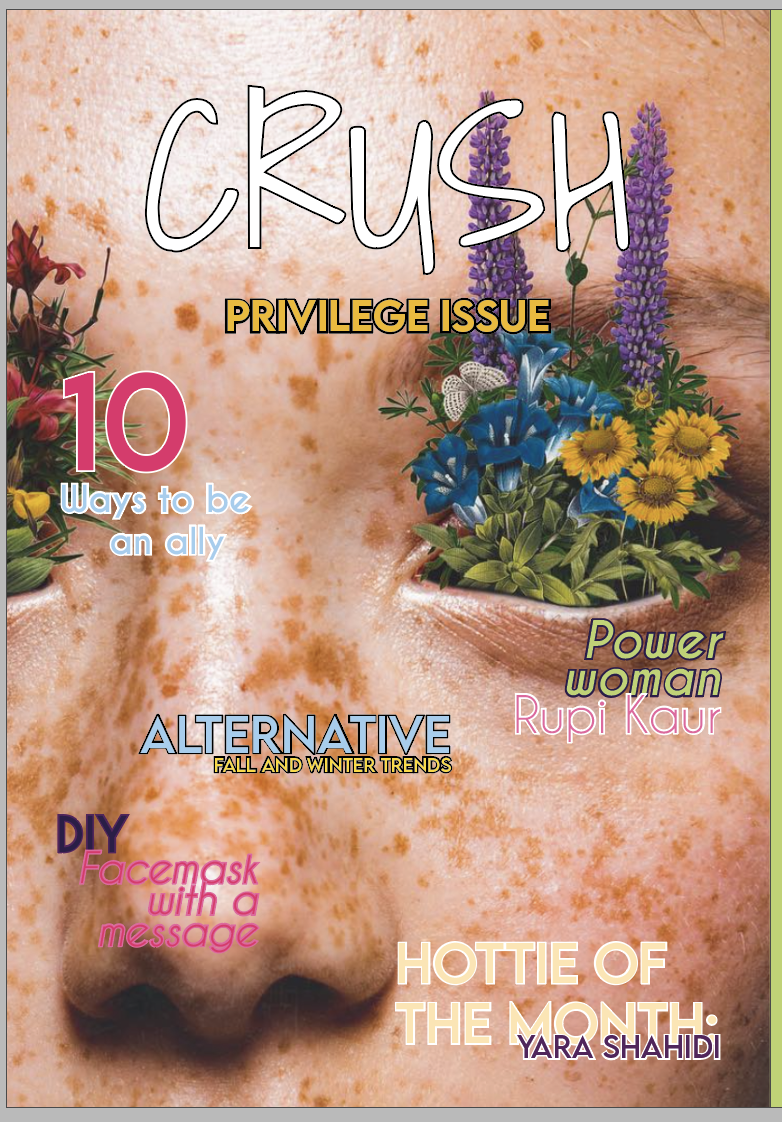
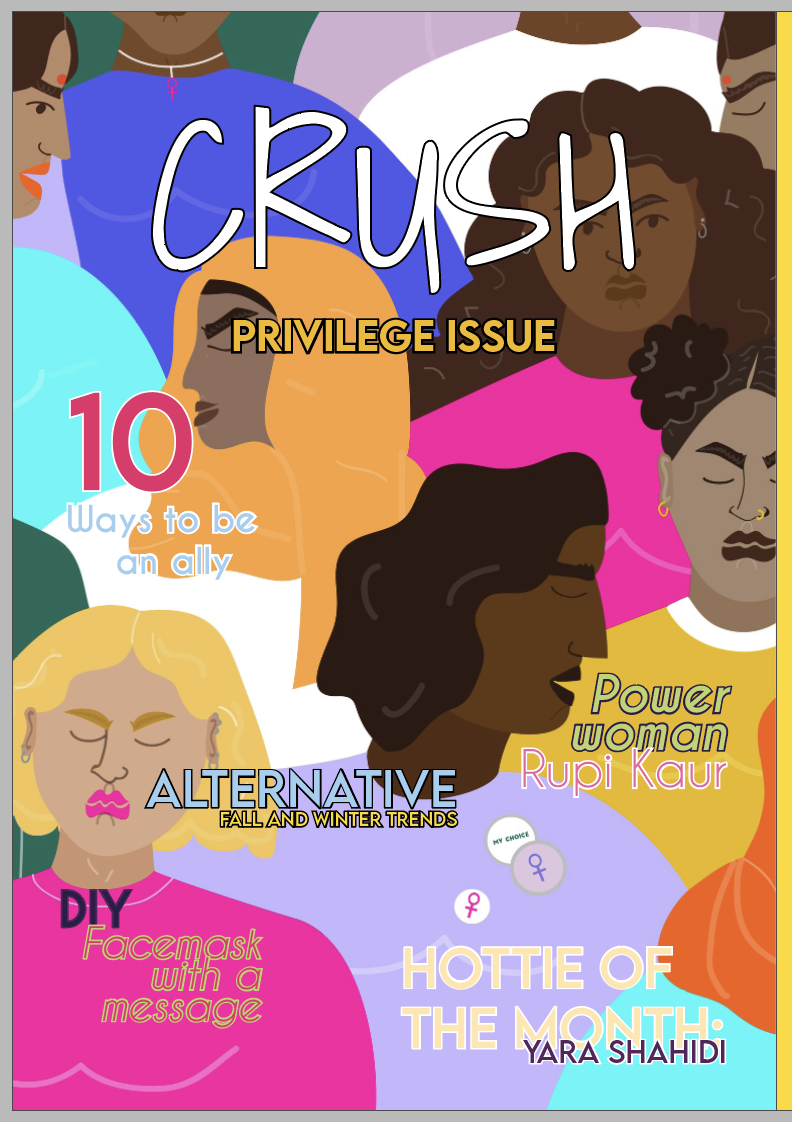
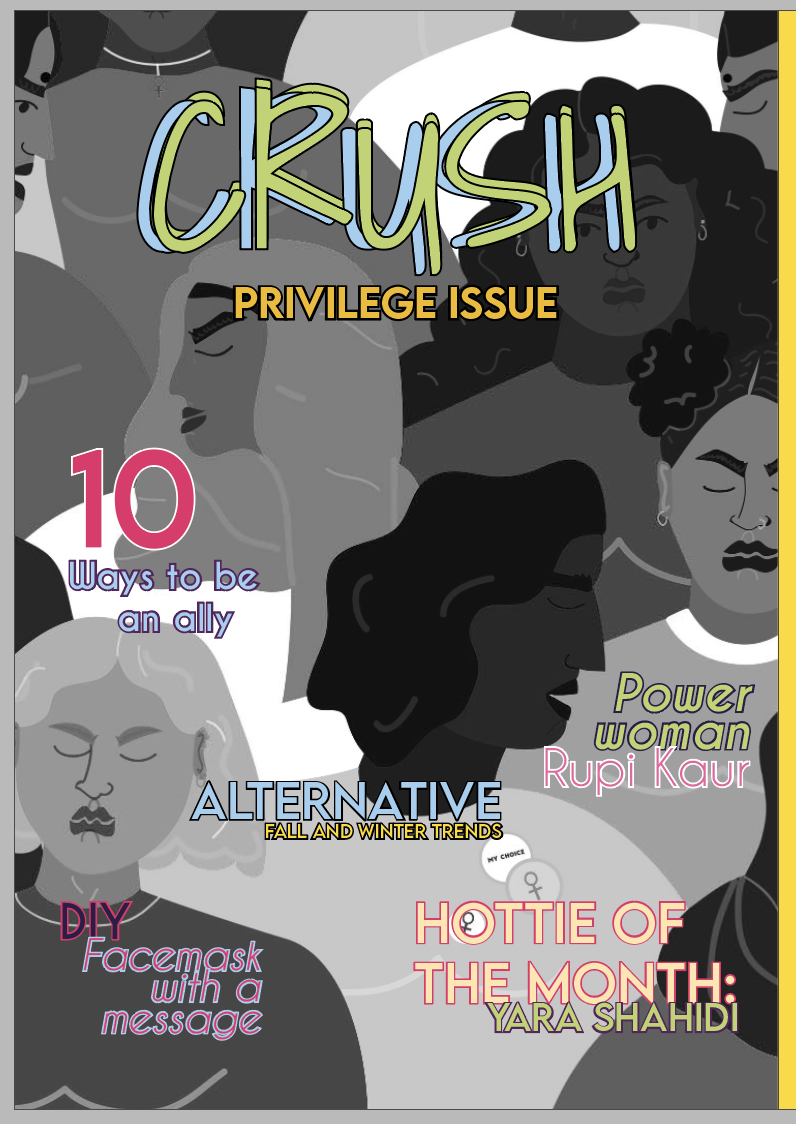
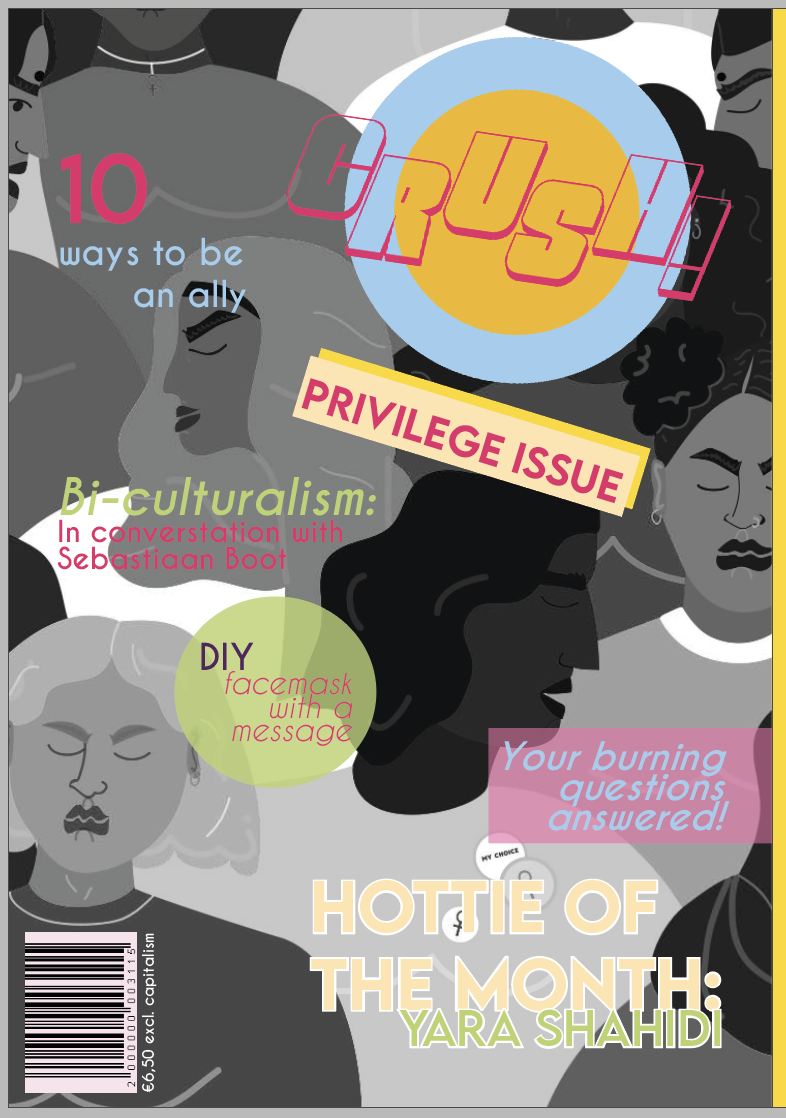
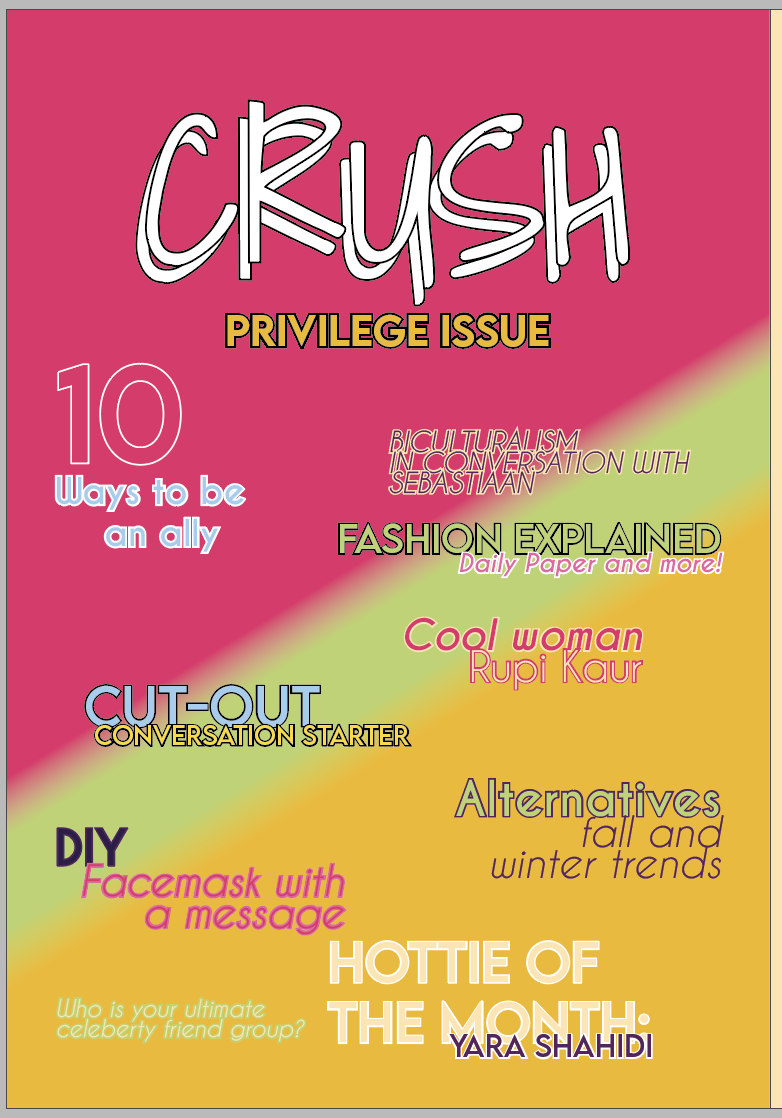
I got the job to make the cover. Since it's the first thing you see it is quit an important part of the magazine. So a made a few options for the group, let them have feedback an out of that make a final one. The first one is just with colours and a lot of subtitles, not to put them all on the cover but to experiment with the fonts and the graphic design. The second one I liked a lot but I knew it was too alternative for our target audience and it wouldn't have the glossy feeling what we want. So I found this illustration from Erin Aniker and I thought it fitted perfect to our magazine and our content. I decided to make it black and white so the colours of the subtitles would come out strongly. Later we put the logo on it and I made the subtitles more in composition.
Cover
Putting it in one document
When all the documents where ready and gathered in de google docs it was time for me to put it all in one file. It was still a lot of work because not all the sizes where the exact same. After a half day of work the magazine was a whole!
Reflection
YES!! The magazine is finished, I'm really proud and satisfied about the end result and I can't wait to print it. The collaboration with the group was really nice. I felt that we complemented each other and make it the best we could.
Back to home page
Column
BREAKiNG THROUGH THE BOXES - By Elke van Bekkum
She is pretty, they are weird, she is funny, she is fat, she is stupid.
He is smart, he is ugly, they are cool, he is foolish, they are crazy.
They are lonely, she is populair, he is wanted, he is a loser
She is white, she is black, he is Asian, they are Western.
He can’t be emotional, she can’t be rude. A person can only be one thing. Girls can only be girly, boys can only be boyish. One human trait per person enough. That’s who you are, you can’t be anything other than that. Once you’ve found your box, you can’t be in another one. You’re exclusively part of that one little box.
On one hand, it’s nice to have a box to fit into, to be part of a group. Even if you’re a loner, you’re part of the loner-group, the loner-box. Finding your own identity and your own voice, can be quite hard so being put (or putting yourself) in a box is easy. But on the other hand, if you can only be in one box, is it really you? If you are fat, can you be pretty as well? If you are intelligent, can you be cool? If you are Black, can you be popular? If you are Western, can you be funny?
We have learned to combine human traits with appearance.
Most of the time, that’s not the whole truth.
It’s a judgement. When we let go of our taught judgements, we could let go of the boxes. If we would let go of them, people wouldn’t be chained to their stereotype and get the opportunity to explore themselves, find a way to see who they really are and show that to the rest of the world. The world can see who others really are instead of just seeing a stereotyped group. If we want to break through these boxes and rise above them, we need to get rid of the stereotypes first, because they are the cause of the boxes. Stereotypes create the boxes we put people in. When you fit in a box, you’re part of a certain stereotype, so how do we break that habit of creating those stereotypes?
First of all--we need to see people as individuals. We have to pay attention to one person instead of a whole group. Not all people that we put into certain boxes, fit the stereotypes that belong to that box. Appearances aren’t everything. Try to imagine what the world would look like through the eyes of a stereotyped person, try to make contact with people that are victim to harmful stereotypes and see if your prejudices were right (spoiler alert: they’re probably not!). By creating our own experiences, we learn to stop assuming that the stereotype is the whole truth. If we don’t see those stereotypes, the lines of the boxes fade. It becomes possible to rise above one box, fit into several boxes or fit into none at all. Unlike the Exactitudes, which you can see in the background, we wouldn’t judge people and divide them just based on their appearances.
So, instead of saying there’s a brown nerd sitting next to you in history class, we should say that there’s a smart, emotional and cool boy sitting next to you in history class.
I found it difficult to find a subject for my column, I didn't want to repeat myself next to my privilege story. So I looked back at the archive and my hot glue and I saw the exactitudes coming back a couple of times. Thinking in boxes, not being valued as an individual is something I really don't like so I started to write about it and how we should get rid of the stereotypes